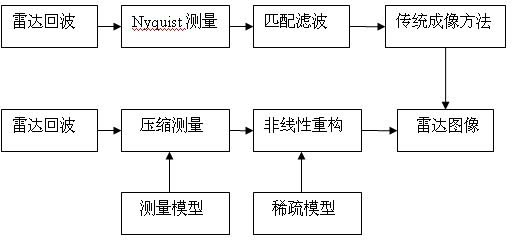Compressive sensing radar imaging algorithm based on subspace tracking
A technology of subspace tracking and radar imaging, which is applied in the field of imaging simulation, can solve the problems of high sampling rate and difficulty in real-time processing of large data volumes, and achieve the effects of reducing sampling rate, saving experimental testing costs, and enhancing the ability to resist noise
- Summary
- Abstract
- Description
- Claims
- Application Information
AI Technical Summary
Problems solved by technology
Method used
Image
Examples
Embodiment Construction
[0026] In the compressed sensing radar imaging algorithm based on subspace tracking in the present invention, the physical optics method is first used to obtain echo data, and then under-sampled. Then according to the form of the echo signal, the sparse basis function is designed. Second, call the corresponding compressed sensing reconstruction algorithm to restore the signal. Finally, traditional imaging methods are used to image it. This method can reduce the sampling rate while ensuring the imaging quality, thereby alleviating the hardware pressure.
[0027] see figure 2 The theoretical block diagram of encoding and decoding based on compressed sensing, and figure 1 In comparison, it can be clearly seen that the sampling and encoding of compressed sensing radar occur simultaneously, and the Nyquist sampling criterion does not need to be satisfied. Figure 4 is the flow chart of the subspace tracking algorithm, Figure 5 It is the flowchart of the orthogonal matching p...
PUM
 Login to View More
Login to View More Abstract
Description
Claims
Application Information
 Login to View More
Login to View More - R&D
- Intellectual Property
- Life Sciences
- Materials
- Tech Scout
- Unparalleled Data Quality
- Higher Quality Content
- 60% Fewer Hallucinations
Browse by: Latest US Patents, China's latest patents, Technical Efficacy Thesaurus, Application Domain, Technology Topic, Popular Technical Reports.
© 2025 PatSnap. All rights reserved.Legal|Privacy policy|Modern Slavery Act Transparency Statement|Sitemap|About US| Contact US: help@patsnap.com



